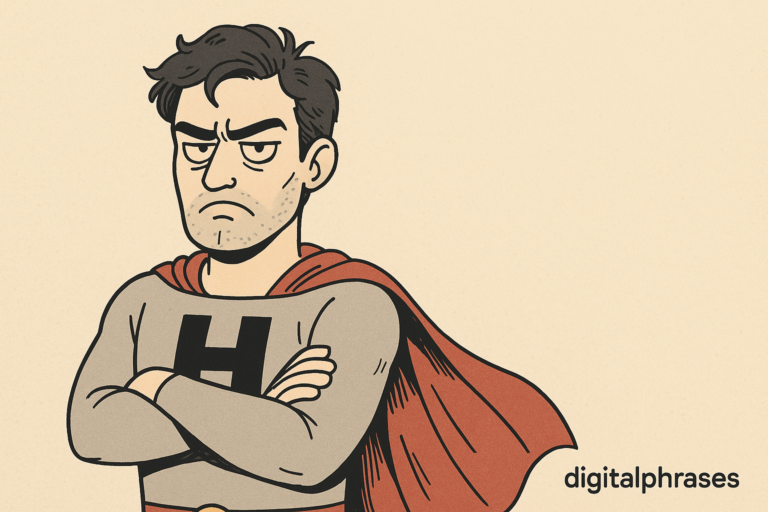3-Act, 5-Act, or No Act – The Right Story Structure For Your Tale
Most of us have been burned by bad outlines. You know the kind: rigid, joyless blueprints that feel more like homework than inspiration. I used to think outlining was the enemy of creativity too.
But here’s the twist: it’s not outlining that kills the spark—it’s how we’ve been taught to do it.
The classic three-act structure?
Useful, sure, but if you’re like me, you’ve probably hit a point mid-draft where that structure feels like a cage, not a guide.
And don’t get me started on scene-by-scene breakdowns that drain the life out of a story before it even breathes.
What I’ve found is that a good outline doesn’t lock you in—it sets you up. Think of it like a jazz chart: you’ve got key changes, you’ve got a beat, but you’re free to riff.
Some pros I know sketch out emotional arcs or theme maps instead of plot points. Others build in “wiggle room” where discovery can happen naturally.
So in this post, we’re going to look at outlining in a way that respects your instincts—and actually fuels your creativity instead of strangling it. Sound good?
Cool, let’s get into it.
The Organic Framework of Crafting a Living Outline
Here’s the thing most people get wrong about outlines—they treat them like contracts. Fixed. Final. Unbreakable. But if you’ve been writing long enough, you know stories don’t work that way.
Characters shift, themes evolve, entire subplots appear out of nowhere—and if your outline can’t flex with that, it’s not helping you.
That’s why I swear by what I call a living outline. It’s not a static document—it’s a conversation with your story as it unfolds. I’ll usually start mine with a super loose shape: I might know the inciting incident, a major midpoint, and a rough idea of where I want to land.
That’s it.
From there, I build outward, filling in details as I understand the characters better.
One of my favorite tools is the “beat map”—not a beat sheet, which feels too prescriptive—but more like a constellation of moments I want to hit. I jot them down as they come to me, not in order, just as flashes of story energy.
I connect the dots later.
Another approach I’ve used is scene sketching. I’ll write one-sentence descriptions of potential scenes—more vibe than plot—and organize them by emotion or theme. Something like:
- “She finally says the thing she’s been holding back—rage, not tears.”
- “Flashback: the night he left, only now we see it through her eyes.”
There’s no pressure to use all of them, but having that pile of narrative sparks keeps me from going stale.
Sometimes, I’ll mind map a character’s emotional journey rather than their physical one. I once outlined a whole novel by tracking one character’s shifting sense of loyalty—every plot move came from that emotional arc, not a standard structure.
And let me tell you, that story had way more heat than anything I’d outlined traditionally.
So if you’re outlining and it feels dead, chances are you’re outlining too soon, too tightly, or in the wrong direction. Try giving your outline room to breathe.
Treat it less like a floor plan and more like scaffolding—something that holds things up while the real architecture takes shape.
And don’t worry if it’s messy.
If it’s evolving, you’re doing it right.
Try These Struture Models
Let’s talk structure—not the kind that boxes you in, but the kind that actually serves the story you’re trying to tell. At this stage in your writing career, you already know every story needs some kind of skeleton. But here’s the key: you get to decide how rigid or fluid that skeleton needs to be. You don’t need to default to the Hero’s Journey or Save the Cat unless it genuinely helps your process.
In this section, I want to offer you a few outlining techniques that prioritize flexibility and creative flow. These aren’t formulas—they’re frameworks you can tweak, bend, or totally remix to suit your style.
1. The Tentpole Method
This one’s great if you’re not a fan of granular plotting. The idea is simple: identify the major emotional or narrative “tentpoles” in your story—the moments that absolutely must happen for the structure to stand.
These might include:
- The inciting incident
- A major turning point at the midpoint
- The climax
- A few key reversals or emotional spikes
That’s it. You don’t have to fill in every single scene in between—those can stay loose or undefined. The point is, with the tentpoles in place, you have enough to build tension and direction, but still plenty of room to play.
I’ve used this when I know a novel’s emotional destination but not the exact route. It’s especially helpful when I’m still letting the characters surprise me.
2. The Inside-Outline Technique
This one flips the usual outside-in plot logic. Instead of starting with external events, you track internal change first—what’s happening to your protagonist on a psychological or emotional level—and then figure out what external events would trigger that change.
For example:
- Start: “She begins afraid to trust anyone.”
- End: “She risks everything to protect someone she loves.”
- Then, fill in the beats that could reasonably push her from point A to B.
This approach is a lifesaver when your story is more character-driven than plot-driven. And let’s be honest, even the most high-concept thrillers fall flat without real internal stakes.
3. Scene Buckets
Ever feel like you’ve got a dozen killer scenes in your head, but no idea how to line them up? That’s where scene buckets come in. Instead of outlining in a linear way, group your scenes by purpose or narrative function.
Buckets might include:
- Revelations
- Escalations
- Setbacks
- Quiet character moments
- Thematic echoes
- Surprises
You can write these scenes out of order and shuffle them around later. It’s like curating a playlist before deciding the final tracklist. I’ve used this to keep momentum during drafts—it keeps me writing, even when I don’t know exactly what comes next.
4. Pulse-Driven Plotting
This is more of a rhythm tool than a traditional structure. Instead of mapping out plot points, you track the energy and tension of your scenes—like a heartbeat that speeds up or slows down based on the stakes.
Try sketching out a pulse line where you mark:
- High-tension scenes
- Breathers
- Climaxes (both major and minor)
- Emotional spikes or drops
If your “pulse” is too flat, you’ll know something’s missing. But if the rhythm flows, you’ve got a natural pacing engine that will carry your reader forward—even if the plot itself isn’t fully locked in yet.
One advanced move? Use this to create contrast. Pair a devastating reveal with a low-key, quiet moment. Let one emotional high crash straight into an unexpected lull. That contrast is what creates texture.
5. Reverse Engineering
This one’s simple but powerful. Start with the ending. Not a vague idea—a fully fleshed-out final scene or beat. Then work backward.
- What had to happen right before this to make it land?
- What emotional state is the character in, and how did they get there?
- What lies were they believing at the beginning, and how have those unraveled?
When I use this, it’s usually because I’ve written myself into a corner. I’ll write the final scene—no matter how rough—and then reverse outline from there. I’m always shocked at how much clarity it gives the rest of the draft.
It’s also a great way to make sure your payoff is earned. If your ending feels inevitable and surprising, chances are you nailed the build-up.
Don’t Mix Up the Tool and the Work
Here’s the key idea I want to drive home: these are tools, not rules. They’re not meant to replace your creative intuition—they’re meant to amplify it. Different stories may need different tools. Even different drafts of the same story might need a new approach.
Maybe you use scene buckets for the first draft, then reverse engineer the second. Maybe you combine a pulse map with a character-driven inside-outline. That’s the beauty of being an expert—you don’t need permission to mix and match.
The best part? When you outline this way, you don’t just stay creative—you stay engaged. The process becomes less about filling in blanks and more about discovering shape, meaning, rhythm. And that’s where the magic happens.
Bonus: How To Mix Intuition and Architecture To Design The Perfect Structure
If you’ve been writing for a while, you already know this truth: every novel is a moving target. You start with one idea, and somewhere around chapter seven, the characters start doing things you didn’t plan. The theme shifts.
The side character you added for one scene suddenly demands an arc.
And honestly?
That’s the good stuff.
That’s your creative intuition doing its job.
But here’s the tension: we also need structure to keep a story from spinning out. That’s where outlining as a living process becomes essential—you’re not choosing between freedom and design. You’re blending them.
Let’s talk about how.
One mindset shift that’s helped me (and other experienced writers I’ve worked with) is thinking of plot not as a sequence of events, but as a series of questions.
Not what happens next, but what needs to be challenged, revealed, or transformed?
This keeps your outline connected to your character’s emotional logic, not just the mechanics of the plot.
For example, instead of “Scene 12: Protagonist argues with best friend,” I’ll ask, “What belief is being tested here?”
Then, I sketch the scene in whatever form makes sense—sometimes a paragraph, sometimes a sentence, sometimes just a line of dialogue. It’s still an outline—but it’s one that stays alive.
Another way to marry structure and intuition is to leave intentional “blank zones” in your outline.
Seriously. Label a section: “Something explodes here—emotionally or literally.” Or “A reversal happens, but I’m not sure what yet.” By naming the need without forcing a solution, you hold space for discovery. You’re signaling to your future self: something matters here—let’s find out what. That keeps the door open to surprise, but still gives you direction.
This approach reminds me a bit of jazz improvisation. The chord changes are there. The time signature is solid. But within that framework, you can solo, you can bend notes, you can respond to what’s happening in the moment. That’s what a good outline does—it sets the key, not the melody.
So if you’ve ever worried that outlining might flatten your story, flip the script. Let your outline follow the heat. Build just enough shape to support your wild ideas—and then go chase them.






